Serrated knives are versatile kitchen tools primarily used for cutting through foods with tough exteriors and soft interiors. Their unique design features teeth or notches on both sides of the blade, allowing for quick cutting action and the increased contact area between the blade and the material being cut. Here are some important things to know about serrated knives:
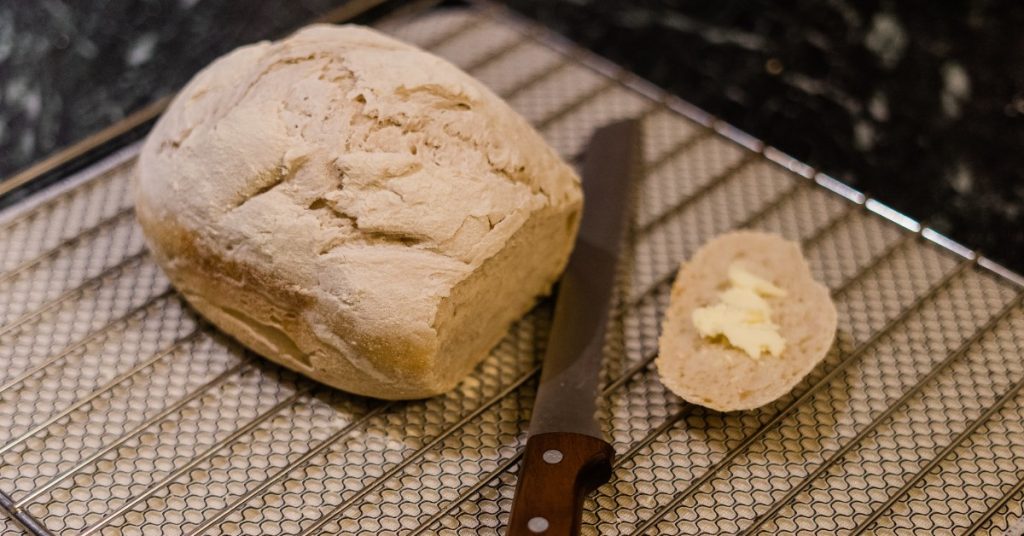
1. Serrated knives have wavy blades.
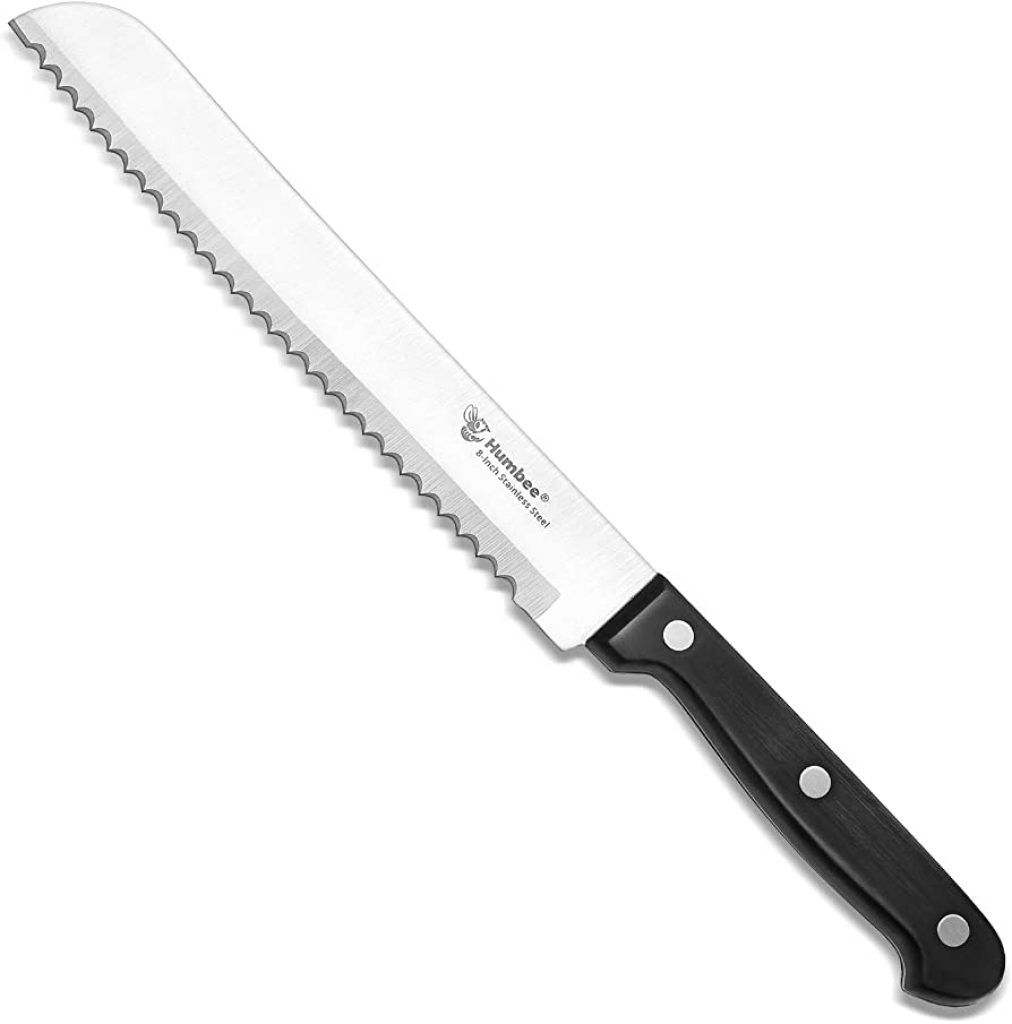
The blade on a serrated knife is wavy or serrated, which means that the teeth are not sharpened along the edge of the blade but instead along the sides of each tooth. This design makes them ideal for cutting through hard or soft foods such as bread, cakes, and tomatoes.
2. Serrated knives are useful for cutting through many different types of foods.
Serrated knives can cut through hard or soft foods without crushing them, making them a useful tool in the kitchen. They are ideal for cutting bread, cakes, and pastry but can also be used on soft foods like tomatoes, cakes, and sausages. In addition, their blades are more flexible than traditional straight-edged knives, making them more effective at cutting through soft, moist items like bread and cakes.
3. Serrated knives require a specific technique for sharpening.
While serrated knives can be sharpened using a sharpening rod, a diamond-coated sharpening tool, or a specialized serrated knife sharpener, a professional generally recommends sharpening them. This is because sharpening a serrated knife requires a specific technique, and if done incorrectly, it can damage the blade.
4. Serrated knives are unsuitable for cutting hard foods like meat or cheese.
Serrated knives should not be used on hard foods like meat or cheese because they dull the blade. Instead, use a straight-edged knife for cutting through these types of foods.
5. Serrated knives are a popular choice in restaurants.
Restaurants often use serrated knives because they are more versatile and can be used for a wider range of cutting tasks. They also tend to last longer than straight-edged knives, which saves money in the long run. In addition, serrated knives require less maintenance than straight-edged knives, making them more practical for busy restaurant kitchens.
Types of serrated knives
Serrated knives are a type of knife that has a saw-like edge, which makes them useful for cutting through foods with tough exteriors and soft interiors. There are several types of serrated knives available in the market, including:
- Bread Knife: A bread knife is a serrated knife designed specifically for cutting bread. It has a long blade with large serrations, making it easy to cut through bread without squishing or crushing it.
- Tomato Knife: A tomato knife is a smaller serrated knife designed for cutting through the delicate skin of tomatoes. It has smaller serrations than a bread knife and a pointed tip, making it easy to pierce the skin.
- Steak Knife: A steak knife is a serrated knife designed for cutting through meat, particularly steak. It has a shorter blade than a bread knife and smaller serrations, making it easy to cut through meat without tearing it apart.
- Utility Knife: A utility knife is a versatile serrated knife used for various tasks. It has a medium-length blade with smaller serrations than a bread knife, which makes it useful for cutting through foods with tough exteriors and soft interiors.
- Cheese Knife: A cheese knife is a serrated knife designed for cutting through cheese. Its short, narrow blade with smaller serrations makes cutting through soft and hard cheeses easy.
- Carving Knife: A carving knife is a serrated knife designed for cutting through large cuts of meat, such as roasts and ham. It has a long, narrow blade with larger serrations, making cutting through the meat easy without tearing it apart.
Overall, serrated knives are essential in any kitchen and come in various shapes and sizes to suit different cutting tasks.
Popular Brands
Here are some popular serrated knife brands available in the market.
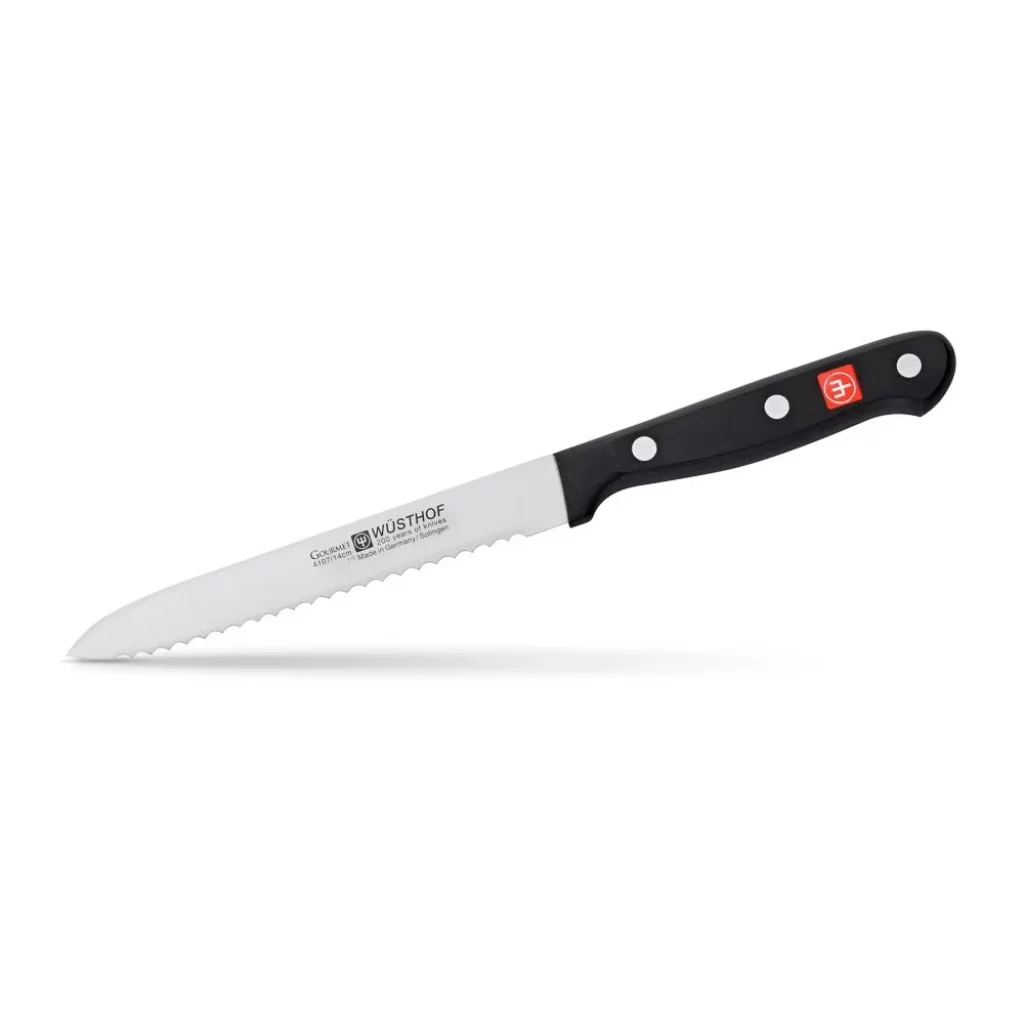
Wusthof Serrated Knife: Wusthof is a well-known brand in the cutlery world, and its serrated knife lives up to its reputation. The blade is sharp and durable, and the handle is comfortable to grip.
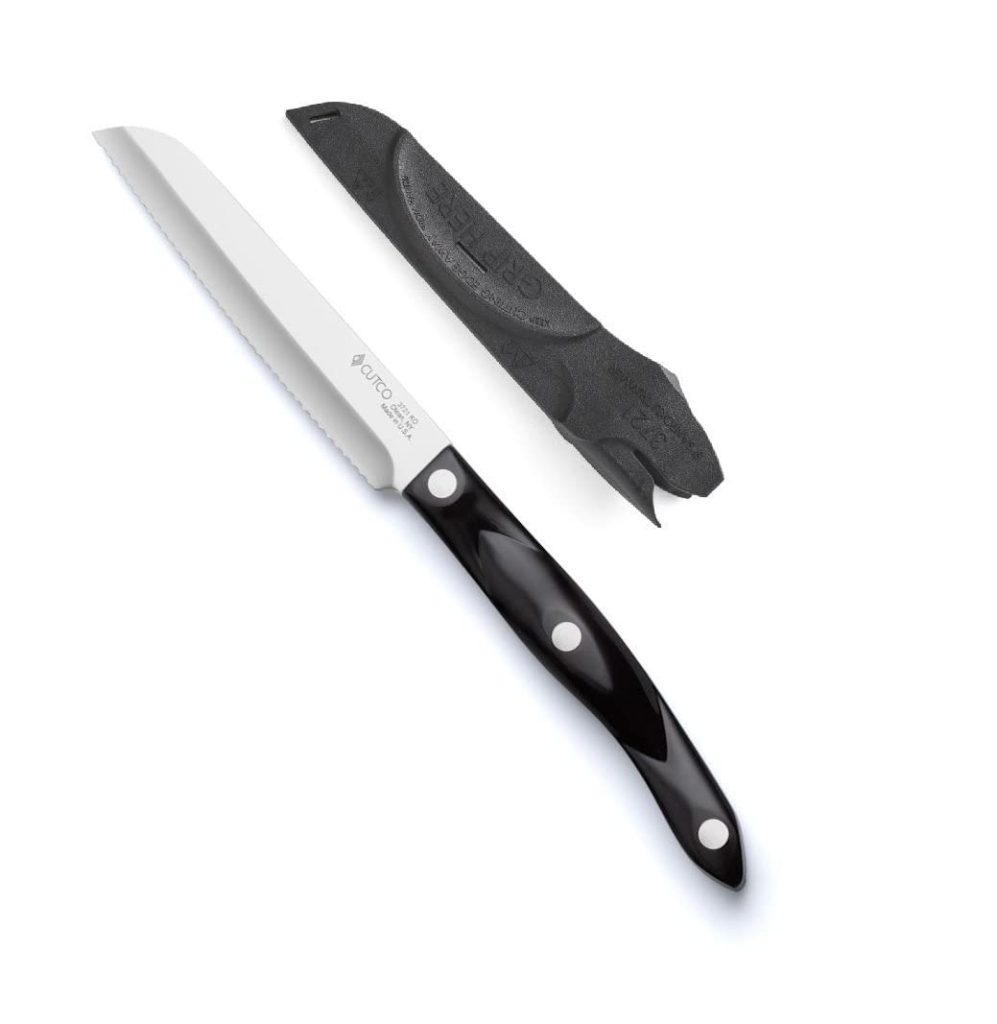
Cutco Serrated Knife: Cutco’s serrated knife is a decent option for those on a budget. While it may not be as high-quality as other brands on this list, it gets the job done.
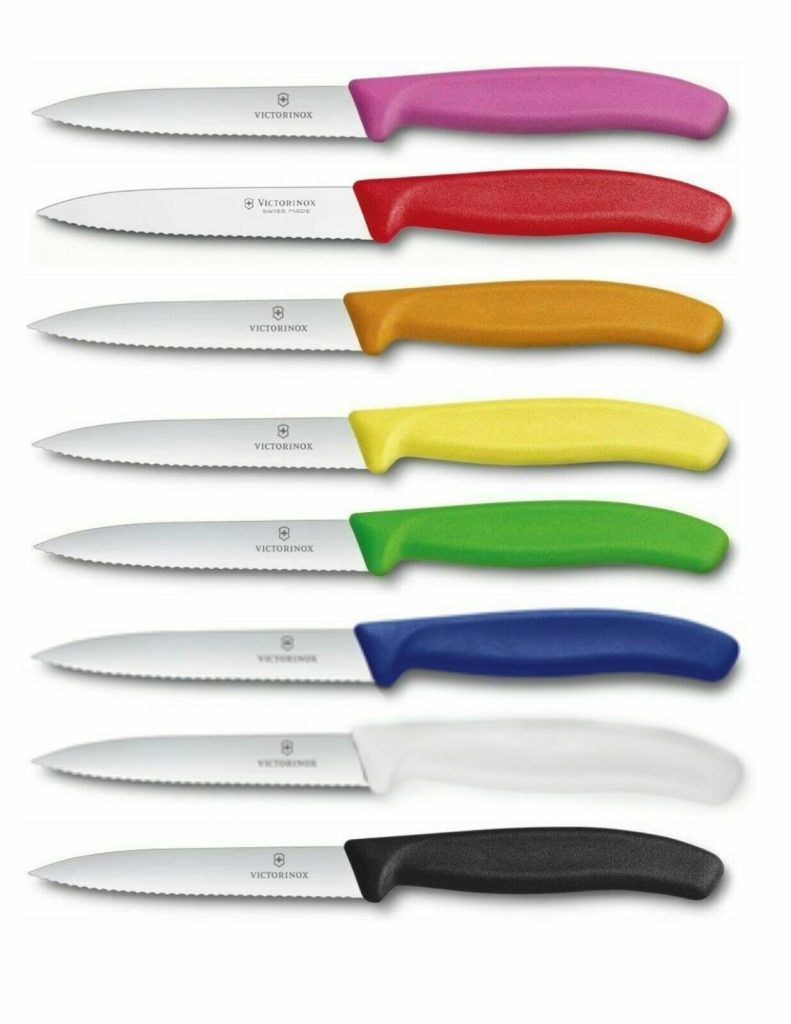
Victorinox Serrated Knife: Victorinox is another reputable brand, and their serrated knife is a great choice for home cooks. The blade is sharp, and the handle is comfortable to hold.
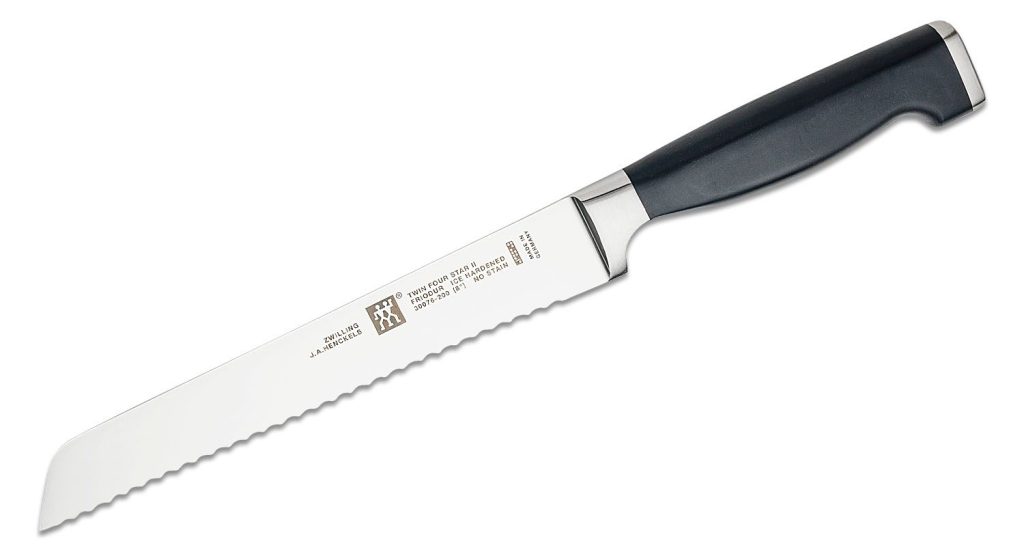
Henckels Serrated Knife: Henckels’ serrated knife is a high-quality option built to last. The blade is sharp, and the handle is comfortable to grip, making it a great addition to any kitchen.
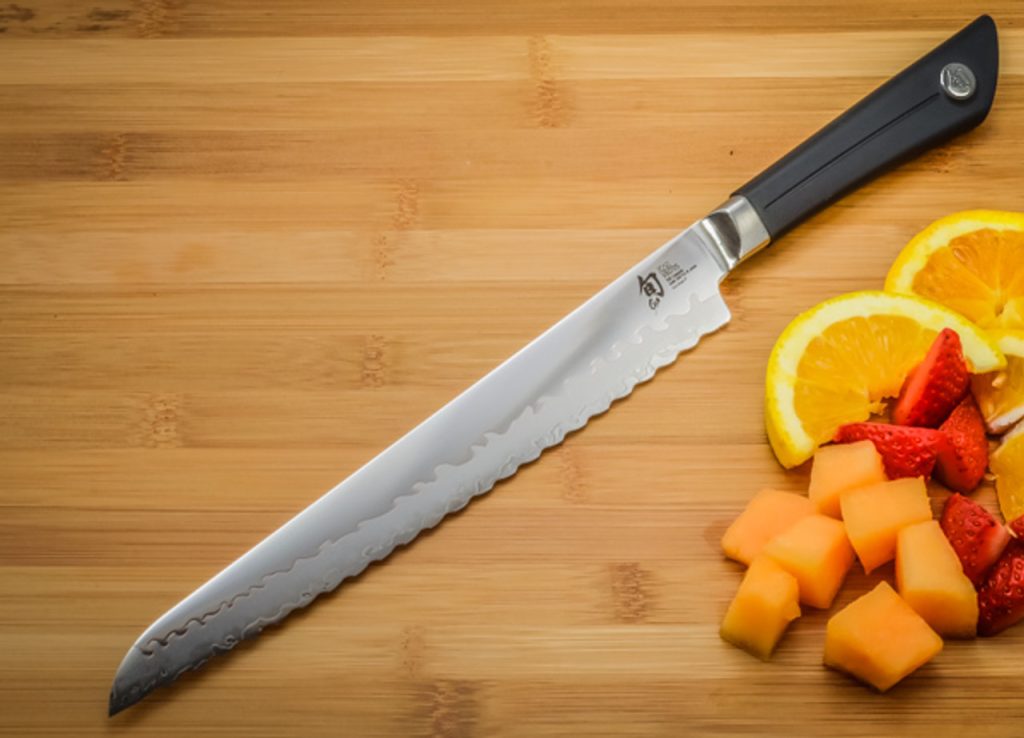
Shun Serrated Knife: Shun is known for their high-end knives, and their serrated knife is no exception. It’s sharp and durable, and the handle is ergonomic for maximum comfort.
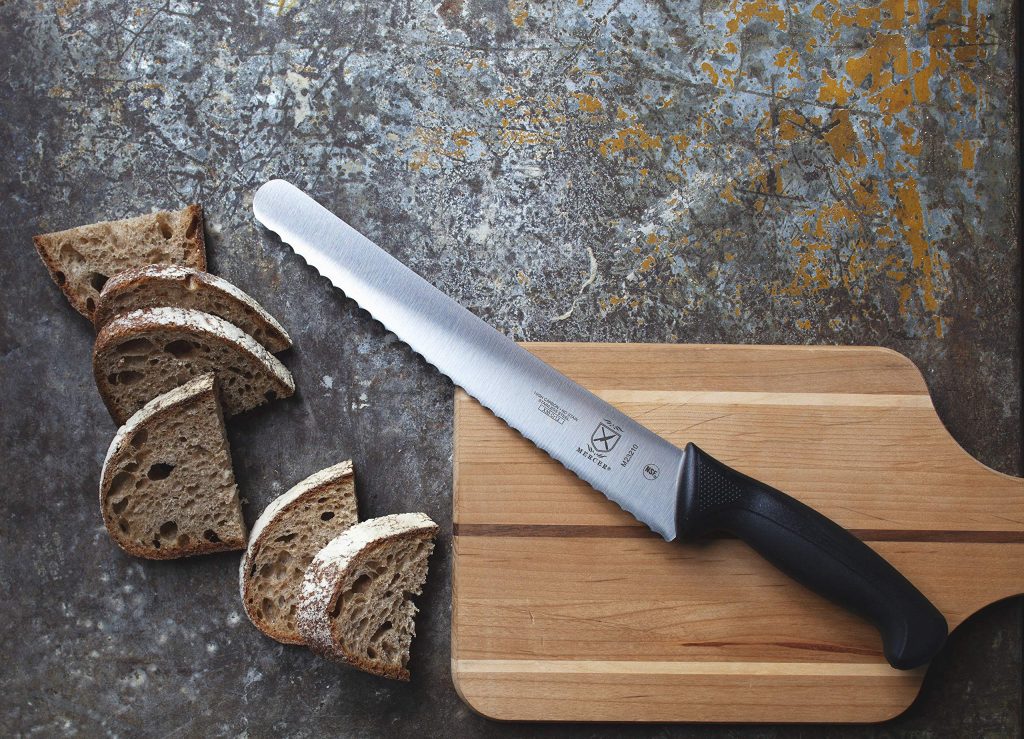
Mercer Serrated Knife: Mercer’s serrated knife is a great option for home cooks and professional chefs. It’s sharp, durable, and comfortable to hold.
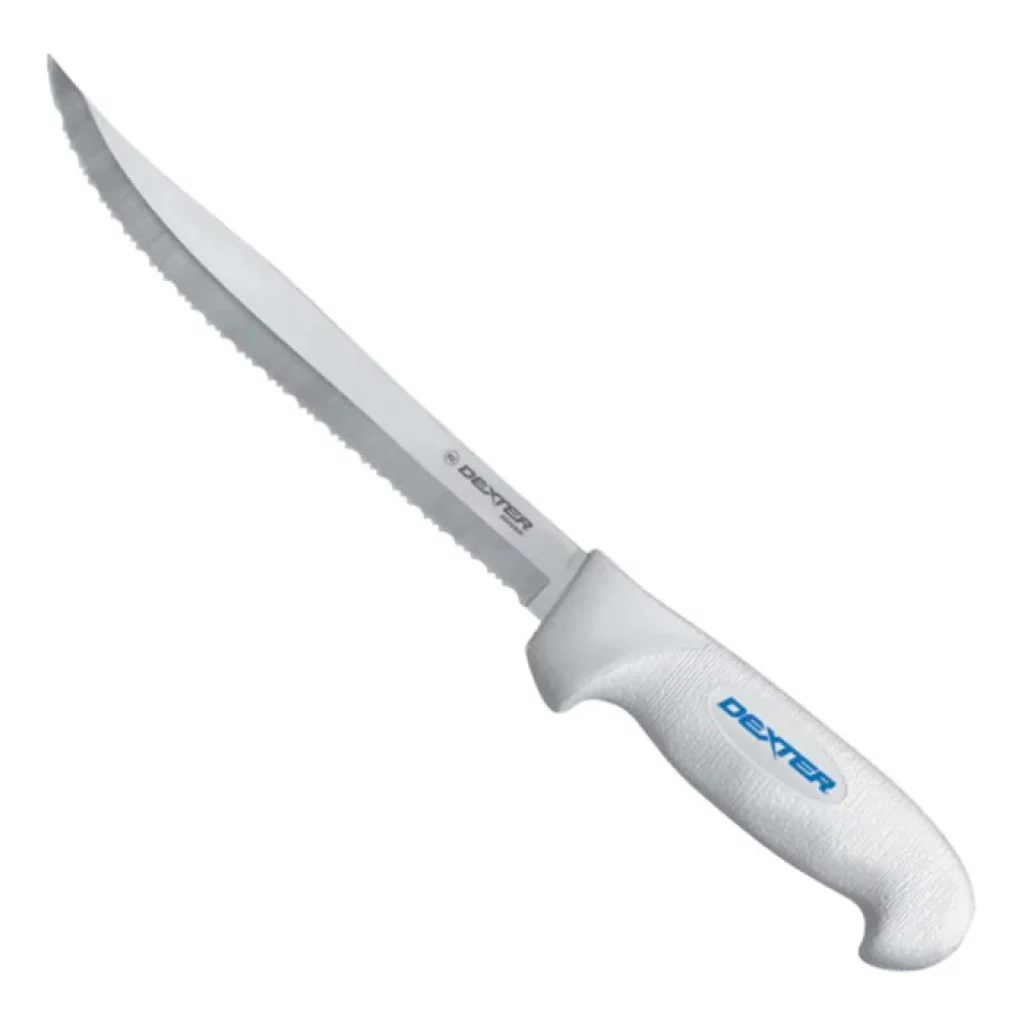
Dexter-Russel Serrated Knife: Dexter’s serrated knife is a solid choice for those on a budget. While it may not be as high-quality as other brands on this list, it’s still a decent option.
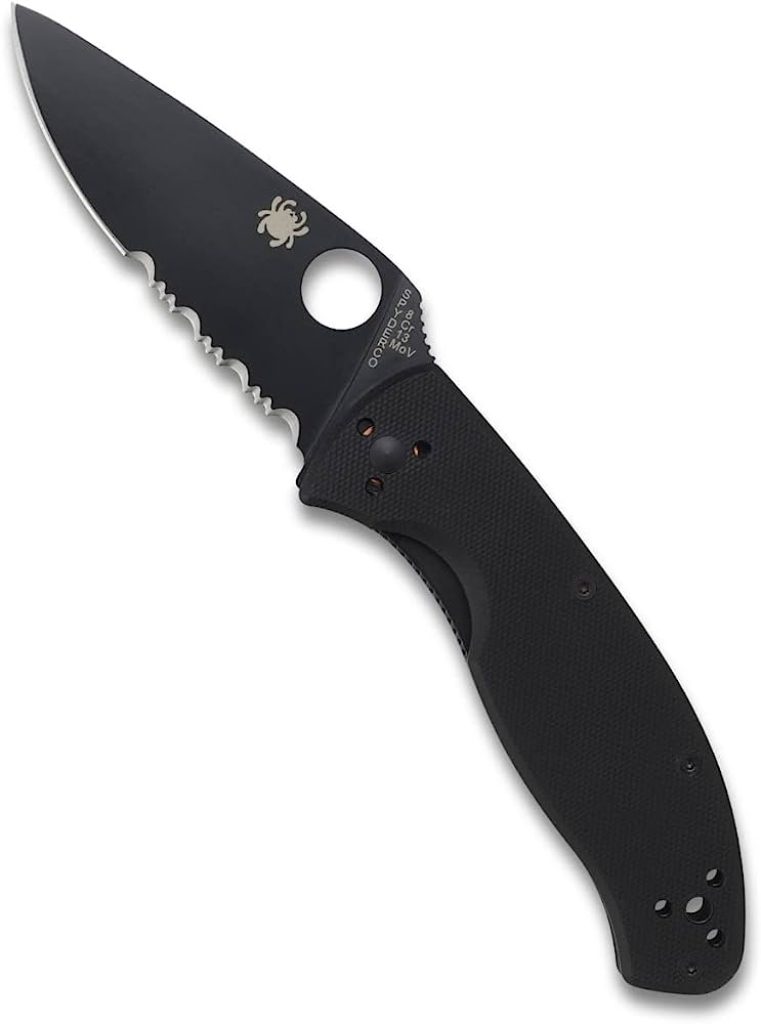
Spyderco Serrated Knife: Spyderco‘s serrated knife is a great option for those who need a heavy-duty knife. The blade is sharp and durable, and the handle is comfortable.
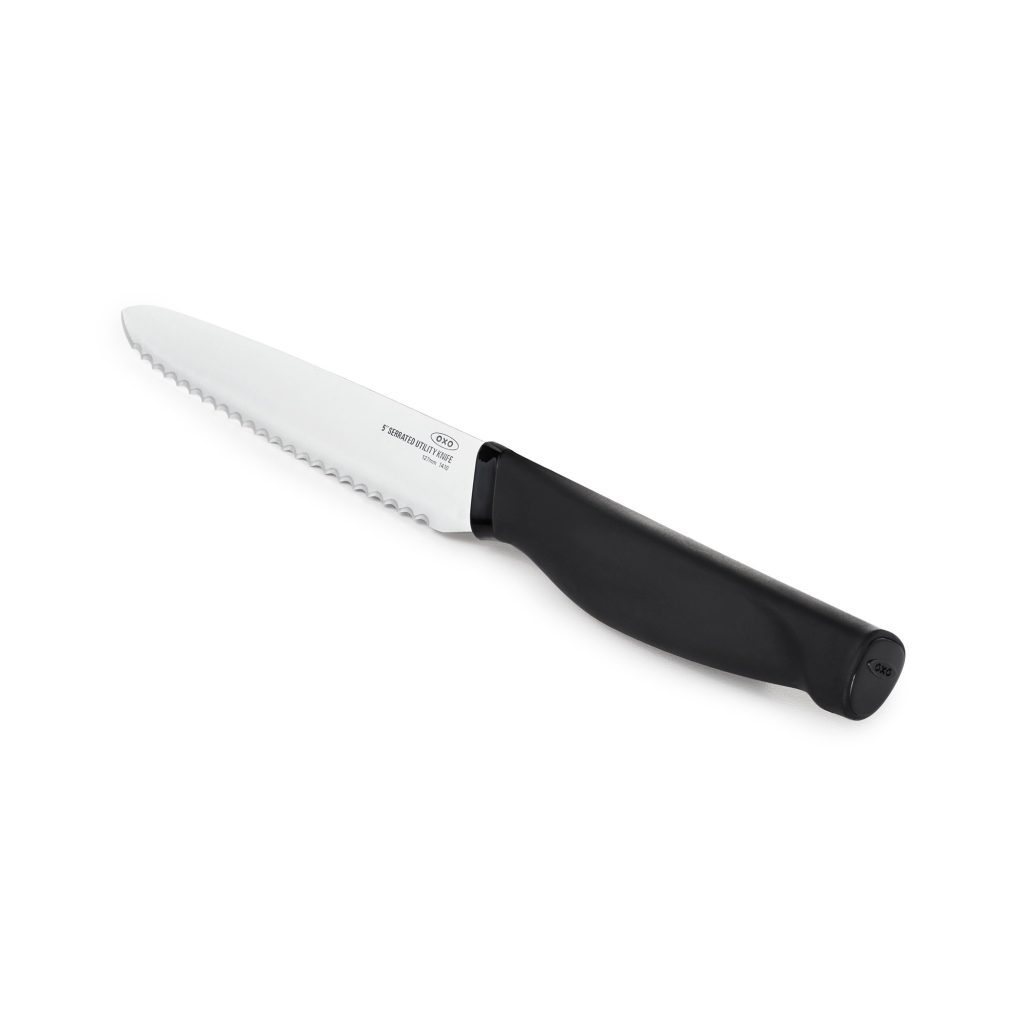
Oxo Serrated Knife: Oxo’s serrated knife is a good option for home cooks. While it may not be as high-quality as some other brands on this list, it’s still a decent option that gets the job done.
How to sharpen serrated knives?
Serrated knives are essential tools in any kitchen. They’re perfect for slicing through tough-skinned fruits and vegetables, crusty bread, and even meat. However, keeping them sharp can be challenging. Unlike straight knives, serrated knives have teeth that make them unique but more difficult to sharpen. Let’s review some tips on sharpening serrated knives effectively.
- First, let’s start with the basics. Before sharpening your serrated knife, ensure you have the right tools. You’ll need a serrated knife sharpener designed specifically for sharpening serrated knives. You can find these sharpeners at your local kitchen store or online.
- Once you have your serrated knife sharpener, begin by carefully examining your serrated knife’s teeth. You’ll notice that the teeth are angled in one direction, so make sure you’re sharpening in the same direction.
- Then, using the serrated knife sharpener, begin sharpening each tooth, starting from the base of the blade and moving toward the tip. Apply gentle pressure as you sharpen, and be sure to keep the angle of the sharpener consistent.
- After you’ve sharpened each tooth, take a closer look at the blade. You may notice some burrs or rough edges along the blade’s edge. Use honing steel or a sharpening stone to remove any burrs, gently running the blade along the honing steel or sharpening stone, working from the base of the blade to the tip.
- Finally, rinse the blade with water and dry it with a clean towel. Your serrated knife should now be sharp and ready to use.
Sharpening serrated knives requires more effort and attention than straight knives. But with the right tools and technique, you can keep your serrated knives sharp and ready for any kitchen task. Always sharpen in the same direction as the teeth, keep the angle consistent, and remove any burrs or rough edges.
Frequently Asked Questions (FAQ)
Conclusion
In conclusion, serrated knives are especially useful in the kitchen when cutting through soft and delicate foods with tough exteriors. Proper maintenance and care can last many years and be a valuable addition to any home cook or professional chef’s collection.






